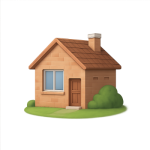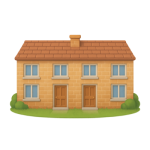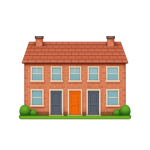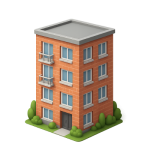Useful Links
Social
House Prices in Wolverhampton: What the Data Shows
You won’t find fireworks, but you will find subtle signals. Wolverhampton’s figures are quietly shifting in interesting directions.
No sales pitch, just sales numbers. The House Prices in Wolverhampton page is built for browsing with a brain.
How much is your Wolverhampton home worth?
Get a personalised estimate based on recent local sales and property type.
What Should Properties in Wolverhampton Cost?
Property Type Breakdown
How big is the property?
Choose your comparison:
Wolverhampton House Prices - Summary
An overview of house prices in Wolverhampton since 2022.
House Prices > Wolverhampton
| Year | Average Price | Transactions |
|---|---|---|
| 2025 (proj.) | £258,700 | 3,580 |
| 2024 | £247,500 | 2,579 |
| 2023 | £241,200 | 3,062 |
| 2022 | £238,800 | 3,736 |
| 2021 | £228,800 | 4,491 |
| 2020 | £211,600 | 3,321 |
| 2019 | £194,400 | 3,890 |
| 2018 | £190,300 | 3,981 |
Year-on-Year Property Price Patterns in Wolverhampton
Wolverhampton’s property prices paint a story of upward momentum. Since 2018, average sale values have climbed markedly, even in the face of fluctuating sales volumes. Hotter than a pub in Chapel Ash on derby day, the local market has shown its resilience and adaptability. Buyers have weathered economic headwinds, with price growth barely breaking stride.
- Upward trend: Average values have notched up every year, with a total price lift that feels unrelenting.
- Volume swings: Transaction numbers have ebbed and flowed. We’ve seen pandemic-era drops, dramatic 2021 resurgence, and more recent mellowing as uncertainty lingers.
- Resilient demand: Even as sales dipped, prices shrugged off pressure, hinting that Wolverhampton’s homes are in higher demand than ever.
Put simply, it’s become tougher to find bargains, especially in those high-demand pockets where homes seem to fly off the shelf faster than pints on match day. If you’re aiming to buy, the trend is sharply upward, underlining the value of early action and thorough research.
The persistent price ascent reflects several realities:
- Limited housing supply driving up competition
- Improvement works and local investment raising overall appeal
- Out-of-area buyers searching for better value compared to pricier neighbouring towns
Buyers and sellers alike are beginning to ask whether these highs are sustainable, or whether change is brewing. For those wondering if their own property sits below this rising average, our guide, Is Your Home Undervalued in Wolverhampton? Here’s How to Check, will bring extra clarity.
So what’s the core message? Wolverhampton’s prices keep climbing, transactions shift, but demand burns bright. Canny buyers will move quickly and watch the numbers like a hawk – or risk missing the next price rung.
Ready to take the next step? See what’s out there among the latest Wolverhampton property listings.
The Cost of Homes in Wolverhampton by Category

Detached
Avg. Property Price: £370,800
Avg. Size of Property
1,298 sq/ft
Avg. Cost Per Sq/ft
£296 sq/ft
Total transactions
1,807 (since 2021)

Semi-detached
Avg. Property Price: £212,100
Avg. Size of Property
955 sq/ft
Avg. Cost Per Sq/ft
£228 sq/ft
Total transactions
3,728 (since 2021)

Terraces
Avg. Property Price: £157,800
Avg. Size of Property
869 sq/ft
Avg. Cost Per Sq/ft
£186 sq/ft
Total transactions
2,737 (since 2021)

Apartments
Avg. Property Price: £116,500
Avg. Size of Property
637 sq/ft
Avg. Cost Per Sq/ft
£181 sq/ft
Total transactions
466 (since 2021)
The Wolverhampton property market is quietly buzzing, certainly more energetic than a Saturday morning queue at the local Greggs. When we peek at the differences by home type, there’s a medley of intriguing quirks in both price and popularity. Detached homes are clearly the “royalty” of the market, with a whole lot of price bravado and generously sprawling interiors. You could stretch out like a starfish in those rooms and still not hit the wall! But as with any good luxury, their rarer transaction numbers hint at exclusivity, with fewer folks sealing the deal compared to other property styles.
At the other end, flats are the “quick-dash to the shops” of the Wolverhampton market. Cosy, practical, and gentle on the purse strings, these homes don’t boast grand space, but they carry the kind of affordability that keeps first-time buyers and solo renters returning for more. Even so, the lower cost per square foot and smaller average sizes shape them as solid value picks, especially for anyone who thrives on city-centre proximity and fuss-free living.
Now, the semi-detached crowd are the Goldilocks properties of the city. Not too big, not too dainty, just right for growing families and anyone who enjoys a sprinkle of garden but would rather skip the vast lawns that swallow weekends whole. Their middle-of-the-road pricing per square foot marks them as savvy all-rounders. The number of transactions recently outpaces the rest, showing they're the beating heart of Wolverhampton’s housing sprint. Is it any wonder they’re snapped up like hot oatcakes?
Terraced houses, meanwhile, are the city’s charming old souls. Compact, affordable, and sometimes crammed into streets glowing with history and character, they bustle with activity. These homes are a magnet for buyers with modest budgets, eager to get their key in the door without a string of zeros trailing their mortgage offer. Their cost per square foot keeps to the more accessible side, making them solid picks in the current climate, especially as prices here are tiptoeing up - not a sprint, but a steady drumbeat of growth.
So what’s the summary? Wolverhampton’s property scene sparkles with variety, but there’s a clear trend: if your wallet’s a little weighty and you’re set on luxury, detached homes beckon, ready for you to bring a grand piano or two. Budget-watchers and nest-builders, though, tend to favour the steady ground of semis and terraces, where balance, flexibility, and genuine warmth steal the show. Thinking your home might be worth more, or has the market left you wondering about your property’s price? It isn’t just about averages - sometimes, the postcode works a little magic of its own. Discover if your home’s secretly undervalued with our tips.
House Price Breakdown by District in Wolverhampton
| District | Avg Price (£) | Transactions |
|---|---|---|
| WV1 | £163,500 | 1,014 |
| WV2 | £162,400 | 1,586 |
| WV3 | £210,200 | 2,852 |
| WV4 | £214,900 | 2,834 |
| WV5 | £302,000 | 1,618 |
| WV6 | £254,200 | 4,406 |
| WV7 | £298,600 | 616 |
| WV8 | £281,900 | 1,713 |
| WV9 | £221,700 | 653 |
| WV10 | £186,800 | 4,755 |
| WV11 | £193,200 | 3,174 |
| WV14 | £179,000 | 9 |
Wolverhampton’s property market is bursting with real variety, shaped by everything from Victorian terraces to sprawling, leafy suburbs. Prices and sales tell a story that’s as lively as the city’s Saturday market, showing stark contrasts from postcode to postcode.
At the more accessible end, certain districts sit below the citywide average, giving buyers a fighting chance in this competitive, ever-moving market. WV1 and WV2 attract attention with their city-centre buzz and relatively modest price points, though space can be at a premium and the pace of change unpredictable. These are popular stomping grounds for first-time buyers or those wanting to keep their options open without wandering too far from Wolverhampton’s core. Local homes here may not offer palatial square footage, but their value lies in location and convenience.
Then we step up to WV3 and WV4, where homes fetch noticeably higher prices. These areas serve up a blend of family-friendly streets, access to parks, and bright, characterful properties. If you’re searching for a suburban oasis with a bit more breathing room, it’s here you’ll often find it. Notably, WV4’s prices have been chasing upward like a greyhound at Monmore Green, hinting at rising demand and a growing reputation as a firm favourite with families.
At the upper end of the property ladder, WV5, WV6, and WV7 set the standard. With their prime detached homes and close-knit communities, they’re the go-to for buyers seeking prestige and more generous gardens. WV6 especially stands out for its sheer number of transactions, signalling a buoyant, ever-active local scene.
By comparison, districts like WV8 and WV9 fall somewhere in-between, offering a compromise between space, setting, and spend. Their popularity endures - buoyed by easy access to major commuter routes and a slower, more relaxed pace. Meanwhile, lower volumes in outer postcodes like WV14 show that quiet corners do still exist, even within reach of all that Wolverhampton offers.
We’ve clocked one crucial pattern: the city’s higher priced areas often see fewer sales, while more affordable postcodes have a livelier turnover. For those keen on shrewd investing or finding untapped value, reading between these lines is everything. If you’re curious about spotting undervalued neighbourhoods or hidden potential, see our in-depth guide here.
What can we conclude?
- Bargain hunters may want to focus on city centre and southern districts, where prices remain within reach and homes change hands at a brisk rate.
- Buyers seeking stability will find the leafy, established appeal of WV6, WV5, and WV7 hard to beat, albeit at a premium.
- Space vs cost remains a crucial trade-off. Some areas offer more house for your pound, while others bank on their unbeatable convenience or upmarket atmosphere.
It’s a city that rewards research and timing. Dive deeper, match your ambitions to the neighbourhood, and you might just catch a deal before it disappears – faster than a quick-witted local nipping into the chippy on a wet night.
How Wolverhampton’s Property Prices Stack Up Regionally
| City | Avg Price (£) | Transactions |
|---|---|---|
| Bilston | £160,000 | 3,271 |
| Willenhall | £169,500 | 3,682 |
| Wednesbury | £160,500 | 3,077 |
| Tipton | £155,800 | 2,902 |
| Dudley | £184,200 | 7,435 |
| Kingswinford | £244,200 | 2,796 |
| Walsall | £199,700 | 14,170 |
| West Bromwich | £180,200 | 3,716 |
| Brierley Hill | £175,200 | 3,132 |
| Rowley Regis | £180,800 | 1,870 |
Zooming in on Wolverhampton’s house prices compared with its neighbours, a few patterns jump straight out, although some are less predictable than estate agents’ glossy brochures would have you believe. While many headlines pitch the Midlands as a property wild west, a closer squint reveals quirks and contradictions that make this corner of the Black Country more of a patchwork than a monoculture.
First, affordability isn’t evenly spread, and as anyone who’s tried to buy near the border with Kingswinford will tell you, the difference can be surprisingly dramatic.
- Wolverhampton is fenced in by contrasting price tiers – a stone’s throw in any direction and you might land in an area commanding noticeably higher or lower averages. Kingswinford sits in its own price stratosphere, edging close to £250,000, which makes Wolverhampton’s typical sale price look distinctly more wallet-friendly.
- Neighbouring towns like Tipton and Bilston keep things almost stubbornly affordable. For buyers with slimmer budgets or those chasing an elusive first house, these areas are a magnet. The lower outlay, especially when compared to Walsall or Dudley, is glaring – more “grab a bargain at the local boot sale” than “fight for scraps at Harrods.”
- Strangely, some pricier towns such as Walsall and Dudley also see substantially more transactions. Are homebuyers overlooking cheaper alternatives? Or is it simply the gravitational pull of better amenities, transport links, and buzzier high streets? I’m not convinced the answer is clear.
- There’s a competitive edge in the air, especially for family homes with driveways and gardens. Buyers hustle for prime spots, chasing their home-owning ambitions like seagulls squabbling over dropped chips outside Molineux. Everyone wants a bigger slice, but not everyone can (or wants to) pay the Kingswinford premium.
With that said, not every corner of the map offers that same feverish activity. Some areas, frankly, turn over slowly, despite their prices being on the friendly side. Maybe it’s the strong sense of community glue, or reluctance to move from a well-practised routine – a pint at the local, familiar neighbours, and a stroll through West Park.
Thinking about where to move next? You could pay less in Bilston or Tipton and bag a project, or fork out for the peace of Kingswinford. Wolverhampton, meanwhile, sits smack in the middle, blending accessibility with a level of value that rarely makes the headlines.
So what's the summary?
- Affordability varies wildly just a short distance from Wolverhampton.
- Neighbouring towns are a mixed bag, with transaction numbers suggesting buyers flock to some pricier markets, while affordable spots tick over quietly.
- Wolverhampton remains a curious balancing act – never the cheapest, nor the priciest, but always in the thick of the action.
Are buyers missing a trick in these overlooked fringes, or is Wolverhampton still the place where value and ambition meet? Let’s get into which areas break with these patterns next.
Please note, the averages here reflect overall price points and sales volumes between areas.
This data leaves out property sizes and square foot costs, so full trends might not be visible. See more detail at our blog. Thank you.
Real Data. Real Intelligence.
Rather than stack figures, we reshape them using a clever system that accounts for context, property form and location-specific history.

